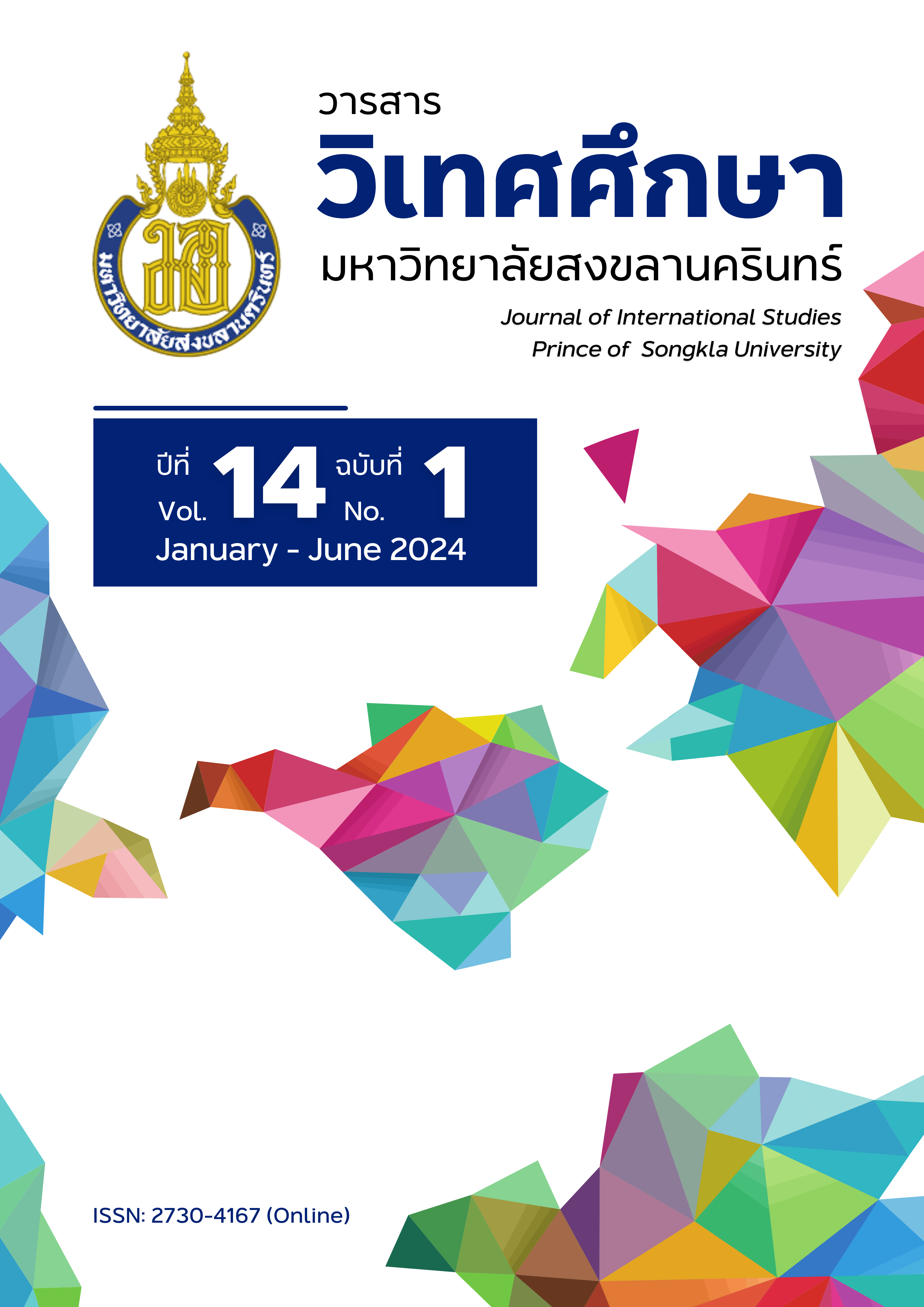วิวัฒนาการการบริหารทรัพยากรมนุษย์ในประเทศไทย: การวิจัยแบบปรากฎการณ์นิยม
Main Article Content
บทคัดย่อ
งานวิจัยนี้เป็นการวิจัยเชิงคุณภาพ ใช้ยุทธศาสตร์การวิจัยแบบปรากฎการณ์นิยม (Phenomenology) โดยมีวัตถุประสงค์เพื่อศึกษาวิวัฒนาการของการดำเนินงานด้านการบริหารทรัพยากรมนุษย์ของสังคมไทยในมุมมองของผู้เชี่ยวชาญด้านทรัพยากรมนุษย์ ผู้ให้ข้อมูลสำคัญ คือ นักบริหารทรัพยากรมนุษย์ ซึ่งมีประสบการณ์การทำงานด้านบริหารทรัพยากรมนุษย์ในประเทศไทยมากกว่า 30 ปีขึ้นไป และเคยดำรงตำแหน่ง หรือกำลังดำรงตำแหน่งผู้บริหารสมาคม สถาบัน ชมรมที่เกี่ยวข้องกับการบริหารงานด้านทรัพยากรมนุษย์ จำนวน 5 คน ผู้วิจัยใช้การสุ่มตัวอย่างแบบเจาะจง และรวบรวมข้อมูลโดยการใช้การสัมภาษณ์ทางไกล สำหรับการวิเคราะห์ข้อมูลเป็นการวิเคราะห์เนื้อหา ผลการศึกษาพบว่า วิวัฒนาการการบริหารทรัพยากรมนุษย์ในประเทศไทย จำแนกเป็น 7 ช่วง ได้แก่ ช่วงที่ 1 ก่อนปี พ.ศ. 2508 (ช่วงเริ่มต้นการบริหารงานบุคคล) ช่วงที่ 2 พ.ศ. 2508-2518 ช่วงที่ 3 พ.ศ.2519-2528 ช่วงที่ 4 พ.ศ.2529-2538 ช่วงที่ 5 พ.ศ.2539-2548 ช่วงที่ 6 พ.ศ.2549-2558 และช่วงที่ 7 พ.ศ.2559 จนถึงปัจจุบัน ทั้งนี้เหตุการณ์ทางการเมือง นโยบายด้านเศรษฐกิจและสังคม และสถานการณ์โลกที่เปลี่ยนแปลงมีผลกระทบต่อองค์กร และการบริหารทรัพยากรมนุษย์ในประเทศไทย
Article Details

อนุญาตภายใต้เงื่อนไข Creative Commons Attribution-NonCommercial-NoDerivatives 4.0 International License.
ข้อความและความคิดเห็นที่แสดงในบทความ เป็นแนวคิดของผู้เขียน มิใช่ความรับผิดชอบของกองบรรณาธิการ และคณะผู้จัดทำแต่อย่างใด
บทความ ข้อมูล เนื้อหา รูปภาพ ฯลฯ ที่ได้รับการตีพิมพ์ในวารสารวิเทศศึกษา ถือเป็นลิขสิทธิ์ของวารสารวิเทศศึกษา หากบุคคลหรือหน่วยงานใดต้องการนำทั้งหมดหรือส่วนหนึ่งส่วนใดไปเผยแพร่ต่อหรือเพื่อกระทำการใด ๆ จะต้องได้รับอนุญาตเป็นลายลักษณ์อักษรจากวารสารวิเทศศึกษา ก่อนเท่านั้น
เอกสารอ้างอิง
กระทรวงแรงงาน. (2565). ประวัติกระทรวงแรงงานhttps://www.mol.go.th/%E0%B9%81%E0%B8%99%E0%B8%B0%E0%B8%99%E0%B8%B3%E0%B8%81%E0%B8%A3%E0%B8%B0%E0%B8%97%E0%B8%A3%E0%B8%A7%E0%B8%87%E0%B9%81%E0%B8%A3%E0%B8%87%E0%B8%87%E0%B8%B2%E0%B8%99/history_department/#8
คณะพัฒนาทรัพยากรมนุษย์ สถาบันบัณฑิตพัฒนบริหารศาสตร์. (2565). ประวัติความเป็นมา. http://hrd.nida.ac.th/THWEB/history.php
จำเนียร จวงตระกูล. (2549). HR มือโปร: 40 ปีสู่มืออาชีพ. กรุงเทพ: ด่านสุธาการพิมพ์.
ดนัย เทียนพุฒิ. (2541). ทิศทางและบทบาทการบริหารทรัพยากรบุคคลในทศวรรษหน้า (ปี พ.ศ. 2550). กรุงเทพ: สถาบันจัดการงานบุคคล สมาคมการจัดการงานบุคคลแห่งประเทศไทย.
เด่นพงษ์ พลละคร. (2515). สหภาพแรงงาน. กรุงเทพ: ไทยเกษม.
นภาพร อติวาณิชยพงศ์. (2561). สหภาพแรงงานที่เป็นขบวนการเคลื่อนไหวทางสังคม. กรุงเทพ: มูลนิธิฟรีดริด เอแบร์ท.
นวัสนันท์ วงศ์ประสิทธิ์, ลัดดาวัลย์ สำราญ, วอนชนก ไชยสุนทร, วิชิต แสงสว่าง, ศุภรักษ์ อธิคมสุวรรณ, นภสร เจริญโพธิ์, ภรณี สวัสดิ์-ชูโต, ปรัชนันท์ เจริญอาภรณ์วัฒนา, นรมน พันเจริญ และสมิตา กลิ่นพงศ์. (2559). ปฐมบทการบริหารงานบุคคลของภาคเอกชนไทย. Thailand HR Journal, 8, 49-85.
นิยะดา ชุณหวงศ์. (2521). การบริหารบุคคลในประเทศไทย. กรุงเทพ: สถาบันไทยคดีศีกษา มหาวิทยาลัยธรรมศาสตร์.
พิชัยรัตน์ สุขทรรศนีย์. (2511). การฝึกอบรมการจัดการงานบุคคลสำหรับฝ่ายจัดการและเจ้าหน้าที่ชั้นหัวหน้างานในวงการอุตสาหกรรมและธุรกิจ: ศึกษาเฉพาะกรณีของศูนย์อบรมแรงงาน. วิทยานิพนธ์รัฐประศาสนศาสตร์ สถาบันบัณฑิตพัฒนบริหารศาสตร์. https://repository.nida.ac.th/handle/662723737/1064
สำนักโฆษก สำนักนายกรัฐมนตรี. (2565). Thailand 4.0 ขับเคลื่อนอนาคตสู่ความมั่นคง มั่งคั่ง ยั่งยืน. ไทยคู่ฟ้า วารสารสำนักเลขาธิการนายกรัฐมนตรี, 33, 2.
สำนักแรงงานในประเทศญี่ปุ่น. (2565). สถานการณ์ทางเศรษฐกิจ. https://japan.mol.go.th/info/economic-situation.
สำนักแรงงานสัมพันธ์. (2557). ความรู้เกี่ยวกับกฎหมายแรงงานสัมพันธ์. พิมพ์ครั้งที่ 2 กรุงเทพ: เอ-อาร์.
สภาพัฒนาการทางเศรษฐกิจ. (2509). แผนพัฒนาการเศรษฐกิจแห่งชาติ ฉบับที่ 2 (พ.ศ. 2510-2514). https://www.nesdc.go.th/main.php?filename=develop_issue
เสาวรภย์ กุสุมา ณ อยุธยา. (2549). ธุรกิจข้ามชาติกับการพัฒนาเศรษฐกิจไทย. นักบริหาร, 26(4), 46-54.
Armstrong, M. (2011). Amstrongs’ Handbook of Strategic Human Resource Management, 5th ed. Hong Kong: Graphicraft Limited.
Creswell, J.W. (1998). Research design: Qualitative, Quantitative, and Mixed Methods Approach. USA: Sage.
Mondy, W.D. and Martocchio. J.J. (2016). Human Resource Management. New Jersey: Pearson Prentice Hall.
Noe, R., Hollenbeck, J., Gerhart, B. & Wright, P. (2023). Human Resource Management: Gaining a Competitive Advantage. USA: McGraw Hill.
Patton, M.Q. (1990). Qualitative Evaluation and Research Methods. California: Sage.


